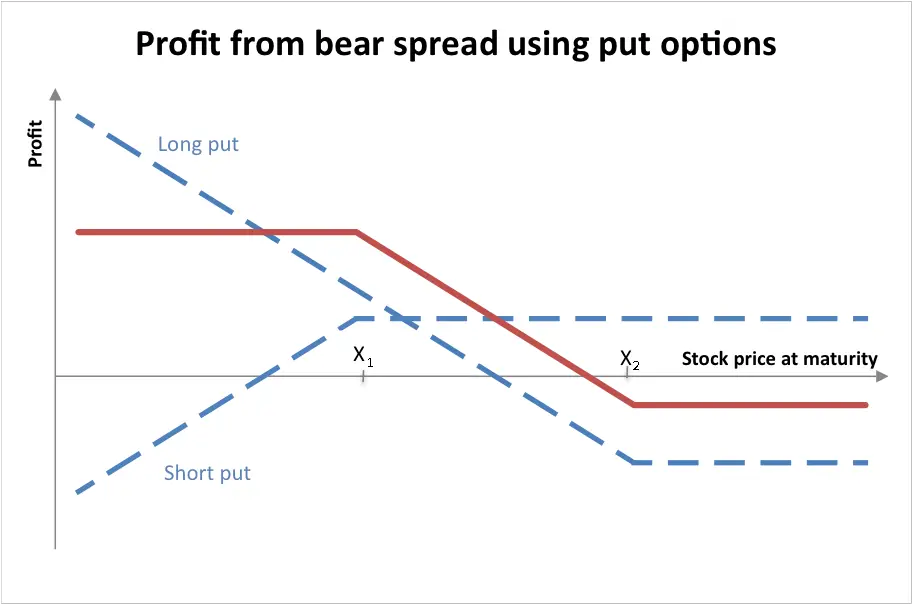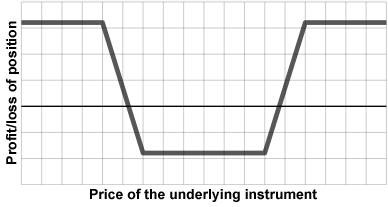Theta Gang is the slang for being a member of a group of other option writers with the mindset that selling premium is a preferred strategy than buying options. They are short Theta by selling option contracts as their strategy to profit from option buyers as time value decays and the option eventually expires worthless. Common Theta Gang strategies focus on lower risk profile option selling strategies that have hedges for capped risk.
Theta Gang option strategies don’t try to predict the future price of a stock, they try to project where the price of a stock is not going to go before the expiration date of short options. Theta Gang strategies try to profit by playing the time game by running out the clock on option buyers. They go short Theta by selling premium and make money each day that price does not move in favor of the strike price of their short options.
There are many option strategies for being short Theta with a hedge but here are three of the most popular and easy to understand.
- Credit Spreads
- The Wheel Strategy
- Short Iron Condor
Put and call credit spreads:

A credit spread is an options play where a trader buys one option and sales another option contract of the same stock and expiration but at different strike price levels. This type of option play construction attempts to make a net profit when the price spread between the two different options gets closer together leading to a net profit from the difference in the short and long options.
Option traders get paid a net credit when they open this option play with the difference between the prices when both selling one option and buying another, they want to see the price spreads get smaller, converge, or simply both expire to keep or grow the net profit. While an option trader needs to pay a premium to open a debit spread they get paid to open a credit spread. A spread getting closer together or converging means that the short option in the play could even be close to being in-the-money at the expiration date but still at a less amount than the net premium paid when opened and the trade is profitable. This would be by a smaller amount than the most that could be gained if both options in the credit spread expired worth nothing, as both expiring worthless would lock in the maximum credit for this option play.
Option brokers margin requirements for option credit spreads are much less than they are for uncovered options with unlimited risk. A credit spread is an option play with the long option acting as a hedge for the short option. It is not possible for the account to lose more money than the margin that is required at the time the play is opened because the loss is capped.
A bullish credit spread refers to an option play where the value of the spread position decreases as the price of the underlying stock rises. A bullish credit spread is constructed with puts options.
A bearish credit spread refers to an option play where the value of the spread position increases as the price of the underlying stock falls. A bearish credit spread is constructed with call options.
This option play is best suited for range bound markets and the profit from this option play comes from the variance in premium between the option contract bought and the option contract short.
The maximum gain is equal to the net credit occurs if both options expire out-of-the-money.
The maximum loss is difference in strike prices minus the net credit that occurs if both the options expire in-the-money.
The Wheel Strategy:
The Wheel Options Strategy also called the Triple Income Strategy is an option play that tries to profit from a trade on a single stock in three different ways.
Step 1 is where the trader sells cash secured put options and collects the premiums on a stock that they wanted to buy at a specific price for a long term position in. If the short put options expire worthless or they are closed for a profit before expiration then the premiums end up being a 100% profit.
Step 2 is to sell covered calls on the stock after you are eventually assigned when your short put expires in-the-money. This step involves selling a call option in the stock with a strike higher than the stock’s cost basis to create a chance of profitability if the out-of-the-money call option expires in-the-money and the stock is assigned to the buyer. Sell the call for a strike price level where you would be happy to sell the stock at for a profit. The stock can become a new source of income by selling covered calls multiple times for more premiums if price goes sideways which will also lower the cost basis of the stock if the calls expire worthless.
Step 3 is if the stock that is now owned goes higher in price movement but the covered call doesn’t go in-the-money then you profit from the premium and capital gains over your entry price but still below the short call option price.
Step 4 is the final step in The Wheel and the option play ends when the covered call on the stock goes in-the-money and is assigned and the stock is called away. All the short options should add up to a profit so that all the premiums that were collected from selling both the cash secured puts before the stock was assigned and then all the covered calls before the stock was called away, along with selling the stock eventually for a profit should create triple income on one position. The Wheel Option Play could be considered quadruple income if the stock inside the play paid a dividend while you were holding it waiting for the covered call to go in-the-money.
The purpose of this option strategy is to sell the put at a price level with a low probability of the price being reached and the put option going in-the-money and being assigned. However, if the put option that was sold out-of-the-money does expire in-the-money and the underlying stock is assigned then the option trader will buy and hold the stock as an investment or long term position trade and convert to a covered call strategy. Whether the put is assigned the first time or if multiple puts expire worthless the option premium received inside this play will lower the cost basis of the stock if eventually bought.
This play is for stocks that you want to be paid to buy at the price you want to buy the dip at any way. This play should only be done on the highest quality stocks with strong fundamentals or index ETFs. The risk is in the stock or ETF position itself. If the underlier plunges in price and you buy it at a loss as the put is assigned and then it goes lower before the covered call goes in-the-money it could be unprofitable when you sell the stock.
This is a perma-bullish strategy that benefits from stocks going up or at least sideways. The power is in the time the option trader is willing to hold the stock like an investor until it gets back to the entry price, which is also where the risk lies, to the downside in the underlying stock.
Short Iron Condor:
An Iron Condor trading strategy is an option play that is created with two vertical spreads. An Iron Condor is a combination of both a put option spread and a call option spread that have the same expiration date and four different strike prices.

This option play is named for the shape of the potential for profit and loss graph, which looks similar to a large bird with a body and extended wings like a condor. With this analogy option traders often call the closer options the ‘body’ and the farther out options the ‘wings’. It is called ‘iron’ to denote its strength in being profitable inside a set price range.
One edge of an iron condor play over a single vertical spread is the initial and maintenance margin needed for the open iron condor is often the same as the margin for one vertical spread as the risk can only go against one side at a time. However the iron condor offers the chance to profit from two net credit premiums of options instead of just one. This can create a larger return on capital at risk when the market is in a trading range.
An edge an iron condor has with commissions happens when the price of the underlier is trading inside the price range of the options inner strikes at expiration and a trader can let most or all of the options expire worthless with no need for further adjustments and trading costs.
An option trader can also close a leg of the trade if price moves to close of going in-the-money on the short side of an option.
The danger for the long iron condor option strategy is when markets trend one way before option expirations causing a loss on one of the short options or if the options in the play become illiquid by moving too far away from being the money and it’s difficult to exit without losing a large amount in the bid/ask spread. The parameters set when you open the trade can quantify your risk based on the worse case scenario of price reaching your hedges for the maximum loss.
Being a member of the Theta Gang means an option trader loves selling lottery tickets to buyers with a low probability of them going in the money.
If you are interested in learning more about option trading I have created the Options 101 eCourse to give new option traders a shortcut to learning how options work.
